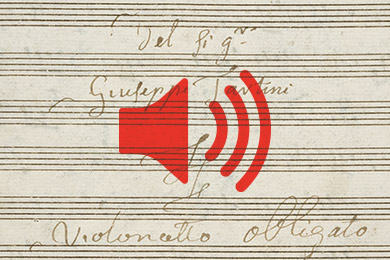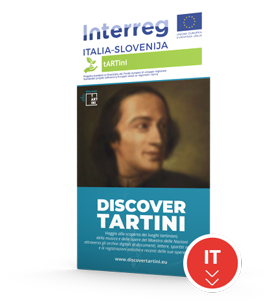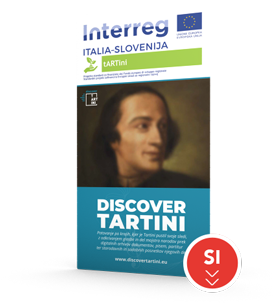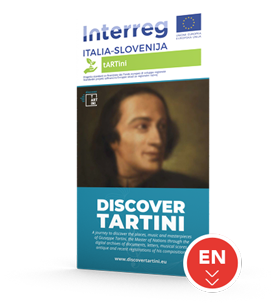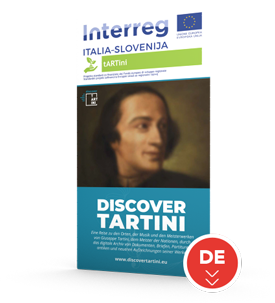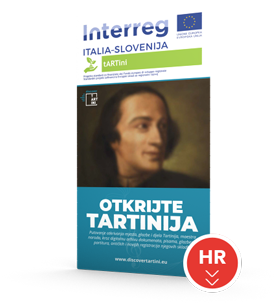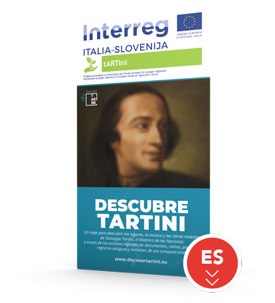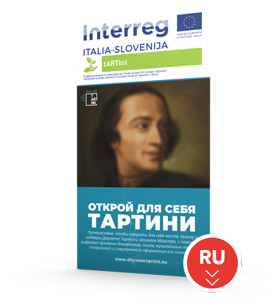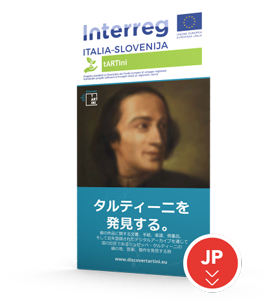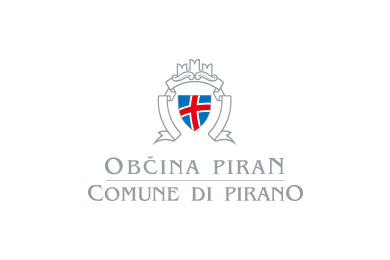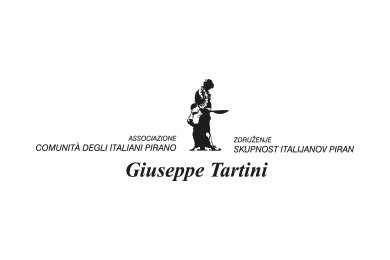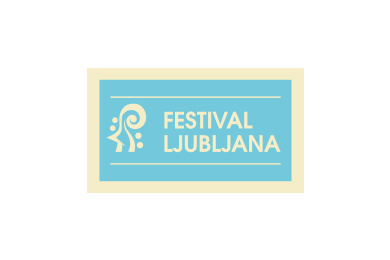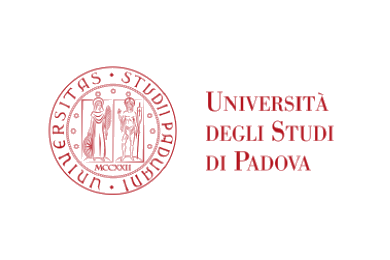

DISCOVER TARTINI
Three Tartini routes to discover the Master of the Nations


DISCOVER TARTINI
Journey to discover the places of Tartini, through original documents, musical scores, handwritten letters, incipit and works of the Master of the Nations
Portrait of Giuseppe Tartini (1692 - 1770)
Museum of Musical Instruments, Castello Sforzesco, Milan - Unknown author
© Municipality of Milan - All rights reserved


DISCOVER TARTINI
More than 2,000 letters, scores and other documents


DISCOVER TARTINI
Three Tartini routes to discover the Master of the Nations


DISCOVER TARTINI
Journey to discover the places of Tartini, through original documents, musical scores, handwritten letters, incipit and works of the Master of the Nations
Portrait of Giuseppe Tartini (1692 - 1770)
Museum of Musical Instruments, Castello Sforzesco, Milan - Unknown author
© Municipality of Milan - All rights reserved
Through the new DISCOVER TARTINI brand, the tARTini project aims to preserve, evaluate, develop and promote the cultural heritage of the famous Giuseppe Tartini, born in Pirano in 1692, who was one of the most famous composers and violinists in the Age of Enlightenment, but also scientist, intellectual and teacher of fame and European importance.




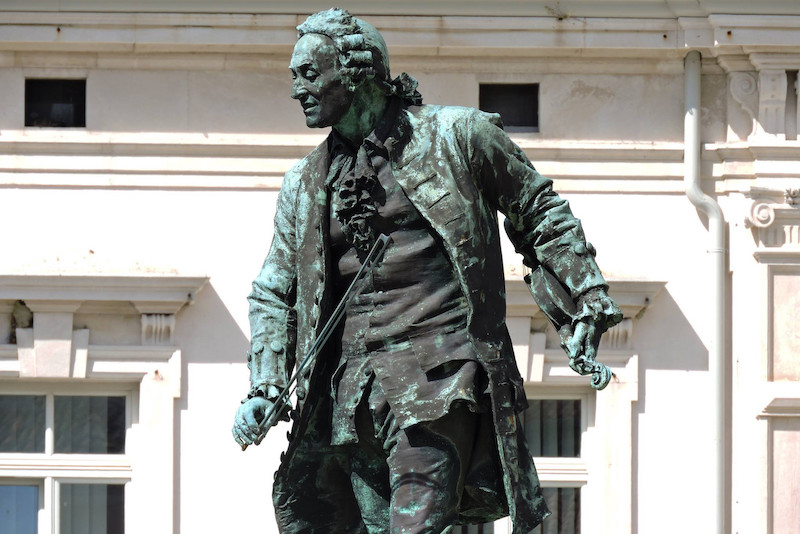
Museo diffuso transfrontaliero
Along the steps of a lifetime
Giuseppe Tartini left Piran to settle in Padua after traveling extensively for study and concerts. He was the greatest violinist in Europe and through his studies and teaching he profoundly influenced both the techniques of execution and the art of music during the Age of the Enlightenment.
Giuseppe Tartini was born in 1692 in Piran, in present-day Slovenia, and died in Padua in 1770. At the time, both cities were part of the Serenissima, the Republic of Venice. Born into a rich and important family of Piran, during his youth he made many trips, from Ancona to Assisi, from Rome to Bologna, to Venice, and on to Fano, Milan and Palermo. These trips were documented in his writings, and over time have fueled a series of legends, which have been indissolubly linked to his figure, the best known of which is the dream, from which his "Trillo del Diavolo" was born.
In his youth he was a skilled swordsman, but the passion that accompanied him throughout his life was for instrumental music. This particular inclination for musical creation and execution led him to compose 130 concertos and more than 175 sonatas for violin. In 1723, together with other European stars of performance, his fame as a musician earned Tartini the call to Prague for the celebrations dedicated to the Bohemian coronation of Emperor Charles VI. Once he had returned to Padua, he commited himself as "First violin and concert leader" in the orchestra of the Basilica of Sant'Antonio. At the same time he dedicated himself to teaching music. He had a varied group of students from all over Europe that earned him the title of the Maestro of Nations.
In the middle of his life, his attention was focused on the theoretical aspects of teaching, on the technology of musical instruments, on the physics of sound, topics on which he also wrote treatises, which attracted considerable attention and discussion among contemporaries and which are still studied.
During his long life Tartini wrote many letters to family, students, friends and colleagues. Snippets of these letters accompany our journey to give us a rounded portrait of his character as a European protagonist of the Enlightenment.
In this first itinerary we retrace this intense life, discovering the places where Giuseppe Tartini lived, worked, loved and spread the sound of his music.
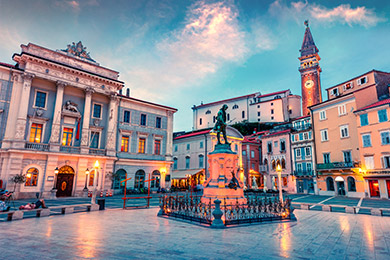
Musical suggestions
Many places recall the presence of Giuseppe Tartini and these represent ideal spaces to stop and listen to his music, or to discover the secrets of the musical instruments and history of his time.
Piran has opened his birthplace to the public, which has become a modern museum and study centre, and named its main square after him and in which the visitor makes their way around his statue. Padua has dedicated one of the monuments that embellish the ellipse of Prato della Valle to him while Trieste named its Conservatory of Music after him, in which precious Tartini artifacts are preserved. But in these cities there are also other evocative places in which the visitor can stop in the quiet to listen to the compositions of the musician of Piran or his students including the Botanical Garden of Padua, on the waterfront in Trieste, or in the Church of San Giorgio in Piran itself.
Along this path we also outline visits to important places for musical culture such as museums dedicated to the history of musical instruments as well as academies and music schools where their secrets can be discovered.
The stages of this and the other two routes lie both in Italy and in Slovenia.
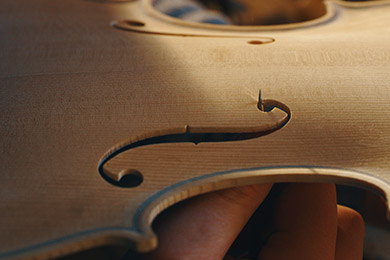
The 10 wonders
Surrounding the Tartini-themed itineraries between Piran and Padua there are other places, often famous around the world, which are fascinating for their beauty and interest including excursions, which we suggest you do not miss!
Following the first two routes, you pass natural and artistic wonders that we strongly recommend you visit and that include the area's significant local beauty spots, its nature and the creations of European civilization. Ancient and powerful nature is on show at the Sečovlje salt pans, the Strunjan cliffs, the Postojna caves, the lagoon of Marano and Grado and is accompanied by monuments such as the Basilica of San Marco in Venice, the Roman excavations and the Basilica of Aquileia and the Three Bridges in the historic centre of Ljubljana. But other niches of history and art are within your reach in the lands of Tartini such as the medieval walls of Piran, the Guarneriana Library of San Daniele del Friuli or the Scrovegni Chapel painted by Giotto in Padua.
This itinerary is a travel proposal that will multiply your musical emotions with the discovery of the vast beauty of the northern Adriatic and its wonders!
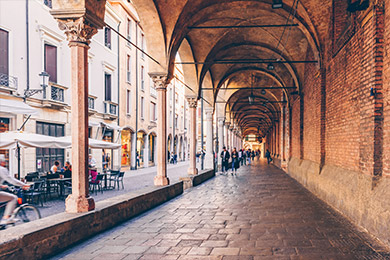
Archives
In the ARCHIVES section, a wide range of original documents, historical testimonies and unpublished materials providing direct knowledge of Tartini’s cultural heritage are available on the web.
This rich collection of documents by the hand of the man himself, manuscripts and historical publications, the digitization of recordings of Tartini's music found in the 20th-century repertoire and the uploading of video and audio of performances of music by Tartini and his circle with period instruments, the transcription of historical treatises and the collection of iconographic and biographical sources, in addition to the editing of the thematic catalogue of the compositions, are a fundamental basis for an in-depth analysis of the studies on the figure of Giuseppe Tartini.
The section is divided into six subsections, which offer the opportunity to explore the work and biography of Giuseppe Tartini: Digital collections, Letters, Discography, Sound archive, Iconography and biographical sources, Thematic catalogue of compositions
The Discover Tartini ARCHIVES thus offer the world of research the possibility of a direct consultation of materials that are largely unpublished and difficult to find.
Margherita Canale
The thematic catalogue of compositions by Giuseppe Tartini
The setting out of the digital thematic catalogue allows integrated queries and searches. In the case of the thematic catalogue available on the discovertartini.eu website, the programme was modelled for the first time in Italy and Slovenia on the software of the MerMEId project with the advice of the librarians of the Royal Danish Library in Copenhagen.
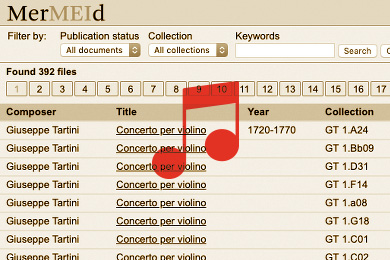
Digital collections
Collection of documents, scores and testimonies that provide us with a vivid image of Giuseppe Tartini.
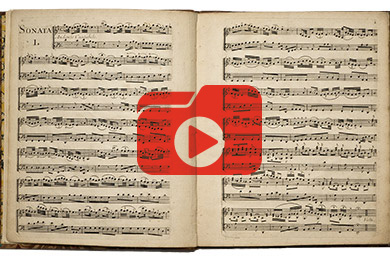
Letters - Giuseppe Tartini’s treatises and theoretical and educational texts
During his life Giuseppe Tartini wrote many letters, now kept in public and private archives in both Europe and the United States. The assembled correspondence is presented here for the first time.
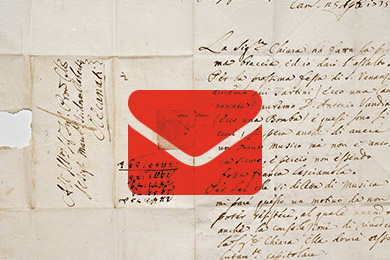
Iconography and bibliographic sources
A collection of documents, scores and testimonies that provide us with a vivid image of Giuseppe Tartini.
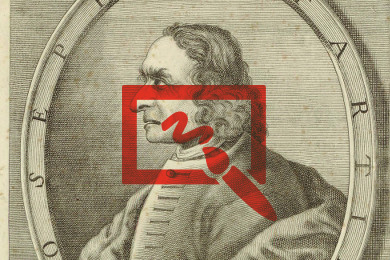
Discography
The Catalogue of known recordings of Tartini's music on both vinyl record and CD is presented here.
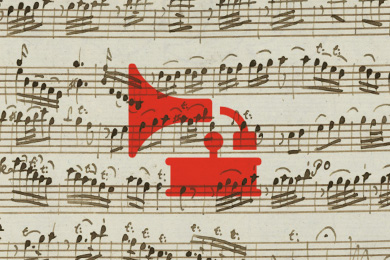
Sound archive
To discover a universe of music as well as the better-known Trillo del Diavolo, an archive of the performances of the music written by Tartini has been gathered here.
